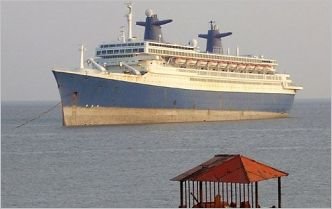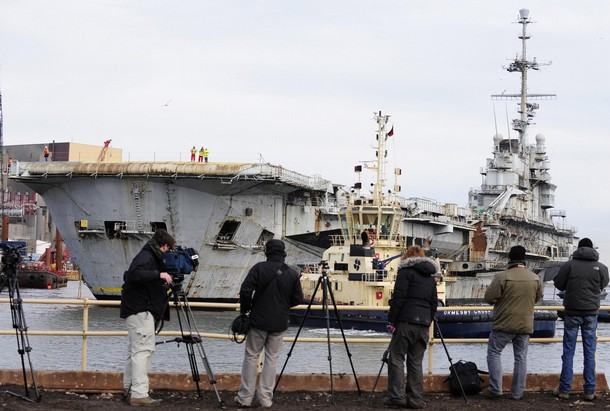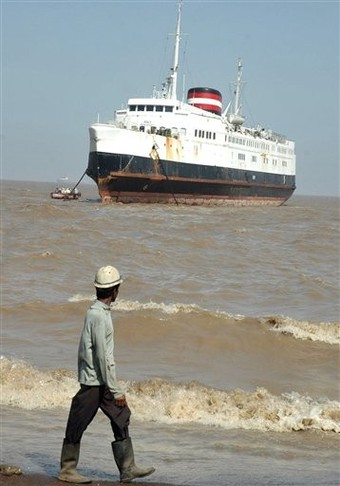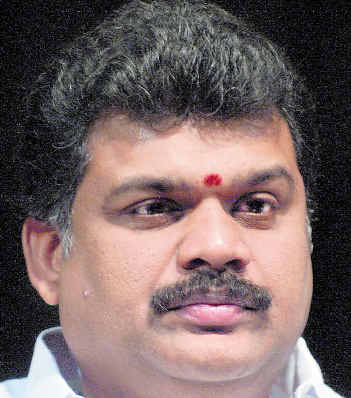To
Shri G K Vasan
Union Minister of Shipping ,
Government of India
Transport Bhawan,
New Delhi- 110001
Subject-Save Alang Beach
Sir,
I am an environmental health researcher working in the area of “Recycling of Ships”. I represent a coalition of groups working on environmental, labour and human rights. In the matter of ship breaking/recycling and dumping of obsolete ships in Indian waters, I am an applicant in the Supreme Court as well. I was involved in the famous Le Clemenceau, the French ship case as well. Also I am involved in a national campaign to save India's dying beaches including once pristine beach of Alang, Bhavnagar, Gujarat.
This letter is an urgent request to you for the protection of the Alang beach.
Unmindful of the Indian Supreme Court order and the report of the report of the Parliamentary Standing Committee on Petitions, European and Chinese shipping companies and agencies have bulldozed the adoption of the text of a new international treaty on ship recycling/breaking through International Maritime Organisation (IMO) in May 2009 in Hongkong, China to ensure that shipowners of the developed world escapes the decontamination cost in the country of export due to to non-implementation of laws in India.
Consequently, the ongoing contamination of Alang beach in Gujarat continues and no heed is paid to the fatal accidents at the ship dismantling yards. Currently, Gujarat Maritime Board (GMB) supervises the secondary steel production process of ship dismantling. Clearly, it is not a marine activiry over which GMB or IMO could be deemed a competent body.
The recent incident of two more deaths occurred on the 1st June on Plot 15 of the ship-breaking yard at Alang beach involved a labourer identified as Ayodhyasingh Rajput (35). Rajput was a native of Jharkhand and was employed by a local company named Chantivala Contractor. Newsreports note that the authorities have confirmed that the incident bore resemblance to yet another fatal accident that occurred at Plot 24 D in May, 2009. In both the cases, workers died when the crane’s rope carrying big steel plates cut from discarded ships broke and fell on them. Alang witnessed its first major workers’ strike around two months back. Alang yard employs close to 15,000 workers mainly in the unorganized sector.
A large number of these workers are migrants from Uttar Pradesh, Orissa, Bihar and Jharkhand and continue to live in hutments, with no provision of clean drinking water and electricity. A Supreme Court-appointed committee revealed that the fatal accident rate in ship-breaking industry is in the range of 2 per 1000 as opposed to 0.34 per 1000 in the mining industry. The fatal accident rate at Alang is around 50-60 per year.
You may find the URL of the European coverage of the issue at http://ec.europa.eu/environment/waste/ships/index.htm
It also has Indian Supreme Court order that is related to the case I am involved in.
More than 100 ships are currently beached illegally in Alang. These days nearly 25 to 30 vessels are coming to the Alang beach every month. Even as teh Supreme Court is seized with the matter, these ships have entered Indian waters in violation of the apex court's orders and the UN's Basel Convention on Transboundary Movement of Hazardous Wastes and their Disposal. It poses a grave threat to our country's environmental security.
It is high time the secondary steel production process of ship dismantling is entrusted to the respective Industry Department and the industrial activity is taken off the beach.
In this regard I also wish to submit that the regressive nature of the recently adopted IMO treaty creates a compelling logic for India to disassociate itself from it becasue it promotes status quo and permits ongoing contamination of once pristince beaches to the detriment of the fragile coastal environment, communities and workers. The treaty's glaring failure lies in its inability to deal with the issue of radioactive steel as well.
This group tracks the responses of shipping industry towards environmental and occupational health justice, highlights influence of shipping companies from EU, US and Japan etc. on IMO, its Marine Environment Protection Committee and South Asian governments. It is keen to restore beaches in India, Bangladesh and Pakistan to their pristine glory for the coming generations. For more information visit: www.toxicswatch.org
15/06/2009
Fatal accidents continue to haunt Alang ship-breaking yard
Ahmedabad: Although the Gujarat government has set up a separate Inspectorate of Factories at Alang ship-breaking yard under its Industrial Health and Hygiene (IH&H) Department to enforce safety provisions, two more fatal accidents have been reported from the world’s largest ship-breaking yard in the last one month.
The recent incident that occurred on the 1st June on Plot 15 of the ship-breaking yard involved a labourer identified as Ayodhyasingh Rajput (35). Rajput was a native of Jharkhand and was employed by a local company named Chantivala Contractor.
The authorities have confirmed that the incident bore resemblance to yet another fatal accident that occurred at Plot 24 D in May. In both the cases, workers died when the crane’s rope carrying big steel plates cut from discarded ships broke and fell on them.
And this, when the ship-breaking industry is one of the few sectors that have benefited from the global economic meltdown. The ship price per tonne has fallen to $250 in a year from the high of $750 in June 2008, indicating a fall of nearly 60 per cent. On the other hand, steel prices have fallen by only 40 per cent resulting in a good margin for ship-breakers. And with nearly 25 to 30 vessels hitting Alang shores every month, the ship-breakers are minting money like never before.
But even in this boom, Alang witnessed its first major workers’ strike around two months back. Alang yard employs close to 15,000 workers mainly in the unorganized sector. A large number of these workers are migrants from Uttar Pradesh, Orissa, Bihar and Jharkhand and continue to live in hutments, with no provision of clean drinking water and electricity.
Ram Patel, the Vice-president, Alang Sosiya Ship Recycling and General Workers Association (ASSRGWA) with nearly 5,000 ship-breaking workers as registered members, had earlier told Newsline, “Though the industry was recognized in
1982, there is no proper workers’ colony even now. The basic amenities like hospitals, schools, etc are nowhere to be seen.”
Besides, getting compensation in case of mishaps has remained a tough task for victims and their families. Gama Prasad, a 38-year-old ship-breaker who hails from Gorakhpur and has been working at Alang for the last 15 years, said, “In cases of injuries, no case is ever registered. The ship-breaking companies at best give some token compensation for medical expenses.”
Prasad said, “This is the reason why these companies never employ any worker permanently.” Even in case of Ayodhyasingh, only Rs 30,000 was given to his family as expenses for performing his last rites, Gama said.
V H Patel, Deputy Director of the Inspectorate of Factories at Alang, while confirming the recent accidents denied the allegations that proper compensation to victims’ families has not been paid.
He said, “The process to provide compensation to the affected parties in both the cases has been initiated and will be completed within a month. The case falls under the jurisdiction of the Worksmen Compensation Authority and it will be decided by a labour judge.”
The compensation amount is calculated taking into account the victims’ age and monthly income, and is deposited by the employer company in the labour court, which then passes it on to the victim’s family, he said.
“About 20,000 workers have been trained at the training centre established at Alang since 2004. Though the number of fatal accidents has come down substantially, still around 20 cases a year are reported with injuries leading to permanent disability,” Patel said.
On the other hand, a Supreme Court-appointed two-member committee in collaboration with the National Institute of Occupational Health (NIOH), Ahmedabad had in its survey last year revealed that the fatal accident rate in ship-breaking industry is in the range of 2 per 1000 as opposed to 0.34 per 1000 in the mining industry. Moreover, Greenpeace and the International Federation of Human Rights have put the fatal accident rate at Alang still higher: at 50-60 per year.
Nikhil Gupta, Joint Secretary, Ship Recycling Association of India (SRAI), that represents the ship-breaking companies, declined to comment on the matter.
But even in this boom, Alang witnessed its first major workers’ strike around two months back. Alang yard employs close to 15,000 workers mainly in the unorganized sector. A large number of these workers are migrants from Uttar Pradesh, Orissa, Bihar and Jharkhand and continue to live in hutments, with no provision of clean drinking water and electricity.
Ram Patel, the Vice-president, Alang Sosiya Ship Recycling and General Workers Association (ASSRGWA) with nearly 5,000 ship-breaking workers as registered members, had earlier told Newsline, “Though the industry was recognized in
1982, there is no proper workers’ colony even now. The basic amenities like hospitals, schools, etc are nowhere to be seen.”
Besides, getting compensation in case of mishaps has remained a tough task for victims and their families. Gama Prasad, a 38-year-old ship-breaker who hails from Gorakhpur and has been working at Alang for the last 15 years, said, “In cases of injuries, no case is ever registered. The ship-breaking companies at best give some token compensation for medical expenses.”
Prasad said, “This is the reason why these companies never employ any worker permanently.” Even in case of Ayodhyasingh, only Rs 30,000 was given to his family as expenses for performing his last rites, Gama said.
V H Patel, Deputy Director of the Inspectorate of Factories at Alang, while confirming the recent accidents denied the allegations that proper compensation to victims’ families has not been paid.
He said, “The process to provide compensation to the affected parties in both the cases has been initiated and will be completed within a month. The case falls under the jurisdiction of the Worksmen Compensation Authority and it will be decided by a labour judge.”
The compensation amount is calculated taking into account the victims’ age and monthly income, and is deposited by the employer company in the labour court, which then passes it on to the victim’s family, he said.
“About 20,000 workers have been trained at the training centre established at Alang since 2004. Though the number of fatal accidents has come down substantially, still around 20 cases a year are reported with injuries leading to permanent disability,” Patel said.
On the other hand, a Supreme Court-appointed two-member committee in collaboration with the National Institute of Occupational Health (NIOH), Ahmedabad had in its survey last year revealed that the fatal accident rate in ship-breaking industry is in the range of 2 per 1000 as opposed to 0.34 per 1000 in the mining industry. Moreover, Greenpeace and the International Federation of Human Rights have put the fatal accident rate at Alang still higher: at 50-60 per year.
Nikhil Gupta, Joint Secretary, Ship Recycling Association of India (SRAI), that represents the ship-breaking companies, declined to comment on the matter.
Gaurav Sharma
Jun 14, 2009
Indian EXpress
The recent incident that occurred on the 1st June on Plot 15 of the ship-breaking yard involved a labourer identified as Ayodhyasingh Rajput (35). Rajput was a native of Jharkhand and was employed by a local company named Chantivala Contractor.
The authorities have confirmed that the incident bore resemblance to yet another fatal accident that occurred at Plot 24 D in May. In both the cases, workers died when the crane’s rope carrying big steel plates cut from discarded ships broke and fell on them.
And this, when the ship-breaking industry is one of the few sectors that have benefited from the global economic meltdown. The ship price per tonne has fallen to $250 in a year from the high of $750 in June 2008, indicating a fall of nearly 60 per cent. On the other hand, steel prices have fallen by only 40 per cent resulting in a good margin for ship-breakers. And with nearly 25 to 30 vessels hitting Alang shores every month, the ship-breakers are minting money like never before.
But even in this boom, Alang witnessed its first major workers’ strike around two months back. Alang yard employs close to 15,000 workers mainly in the unorganized sector. A large number of these workers are migrants from Uttar Pradesh, Orissa, Bihar and Jharkhand and continue to live in hutments, with no provision of clean drinking water and electricity.
Ram Patel, the Vice-president, Alang Sosiya Ship Recycling and General Workers Association (ASSRGWA) with nearly 5,000 ship-breaking workers as registered members, had earlier told Newsline, “Though the industry was recognized in
1982, there is no proper workers’ colony even now. The basic amenities like hospitals, schools, etc are nowhere to be seen.”
Besides, getting compensation in case of mishaps has remained a tough task for victims and their families. Gama Prasad, a 38-year-old ship-breaker who hails from Gorakhpur and has been working at Alang for the last 15 years, said, “In cases of injuries, no case is ever registered. The ship-breaking companies at best give some token compensation for medical expenses.”
Prasad said, “This is the reason why these companies never employ any worker permanently.” Even in case of Ayodhyasingh, only Rs 30,000 was given to his family as expenses for performing his last rites, Gama said.
V H Patel, Deputy Director of the Inspectorate of Factories at Alang, while confirming the recent accidents denied the allegations that proper compensation to victims’ families has not been paid.
He said, “The process to provide compensation to the affected parties in both the cases has been initiated and will be completed within a month. The case falls under the jurisdiction of the Worksmen Compensation Authority and it will be decided by a labour judge.”
The compensation amount is calculated taking into account the victims’ age and monthly income, and is deposited by the employer company in the labour court, which then passes it on to the victim’s family, he said.
“About 20,000 workers have been trained at the training centre established at Alang since 2004. Though the number of fatal accidents has come down substantially, still around 20 cases a year are reported with injuries leading to permanent disability,” Patel said.
On the other hand, a Supreme Court-appointed two-member committee in collaboration with the National Institute of Occupational Health (NIOH), Ahmedabad had in its survey last year revealed that the fatal accident rate in ship-breaking industry is in the range of 2 per 1000 as opposed to 0.34 per 1000 in the mining industry. Moreover, Greenpeace and the International Federation of Human Rights have put the fatal accident rate at Alang still higher: at 50-60 per year.
Nikhil Gupta, Joint Secretary, Ship Recycling Association of India (SRAI), that represents the ship-breaking companies, declined to comment on the matter.
But even in this boom, Alang witnessed its first major workers’ strike around two months back. Alang yard employs close to 15,000 workers mainly in the unorganized sector. A large number of these workers are migrants from Uttar Pradesh, Orissa, Bihar and Jharkhand and continue to live in hutments, with no provision of clean drinking water and electricity.
Ram Patel, the Vice-president, Alang Sosiya Ship Recycling and General Workers Association (ASSRGWA) with nearly 5,000 ship-breaking workers as registered members, had earlier told Newsline, “Though the industry was recognized in
1982, there is no proper workers’ colony even now. The basic amenities like hospitals, schools, etc are nowhere to be seen.”
Besides, getting compensation in case of mishaps has remained a tough task for victims and their families. Gama Prasad, a 38-year-old ship-breaker who hails from Gorakhpur and has been working at Alang for the last 15 years, said, “In cases of injuries, no case is ever registered. The ship-breaking companies at best give some token compensation for medical expenses.”
Prasad said, “This is the reason why these companies never employ any worker permanently.” Even in case of Ayodhyasingh, only Rs 30,000 was given to his family as expenses for performing his last rites, Gama said.
V H Patel, Deputy Director of the Inspectorate of Factories at Alang, while confirming the recent accidents denied the allegations that proper compensation to victims’ families has not been paid.
He said, “The process to provide compensation to the affected parties in both the cases has been initiated and will be completed within a month. The case falls under the jurisdiction of the Worksmen Compensation Authority and it will be decided by a labour judge.”
The compensation amount is calculated taking into account the victims’ age and monthly income, and is deposited by the employer company in the labour court, which then passes it on to the victim’s family, he said.
“About 20,000 workers have been trained at the training centre established at Alang since 2004. Though the number of fatal accidents has come down substantially, still around 20 cases a year are reported with injuries leading to permanent disability,” Patel said.
On the other hand, a Supreme Court-appointed two-member committee in collaboration with the National Institute of Occupational Health (NIOH), Ahmedabad had in its survey last year revealed that the fatal accident rate in ship-breaking industry is in the range of 2 per 1000 as opposed to 0.34 per 1000 in the mining industry. Moreover, Greenpeace and the International Federation of Human Rights have put the fatal accident rate at Alang still higher: at 50-60 per year.
Nikhil Gupta, Joint Secretary, Ship Recycling Association of India (SRAI), that represents the ship-breaking companies, declined to comment on the matter.
Gaurav Sharma
Jun 14, 2009
Indian EXpress
Subscribe to:
Posts (Atom)









